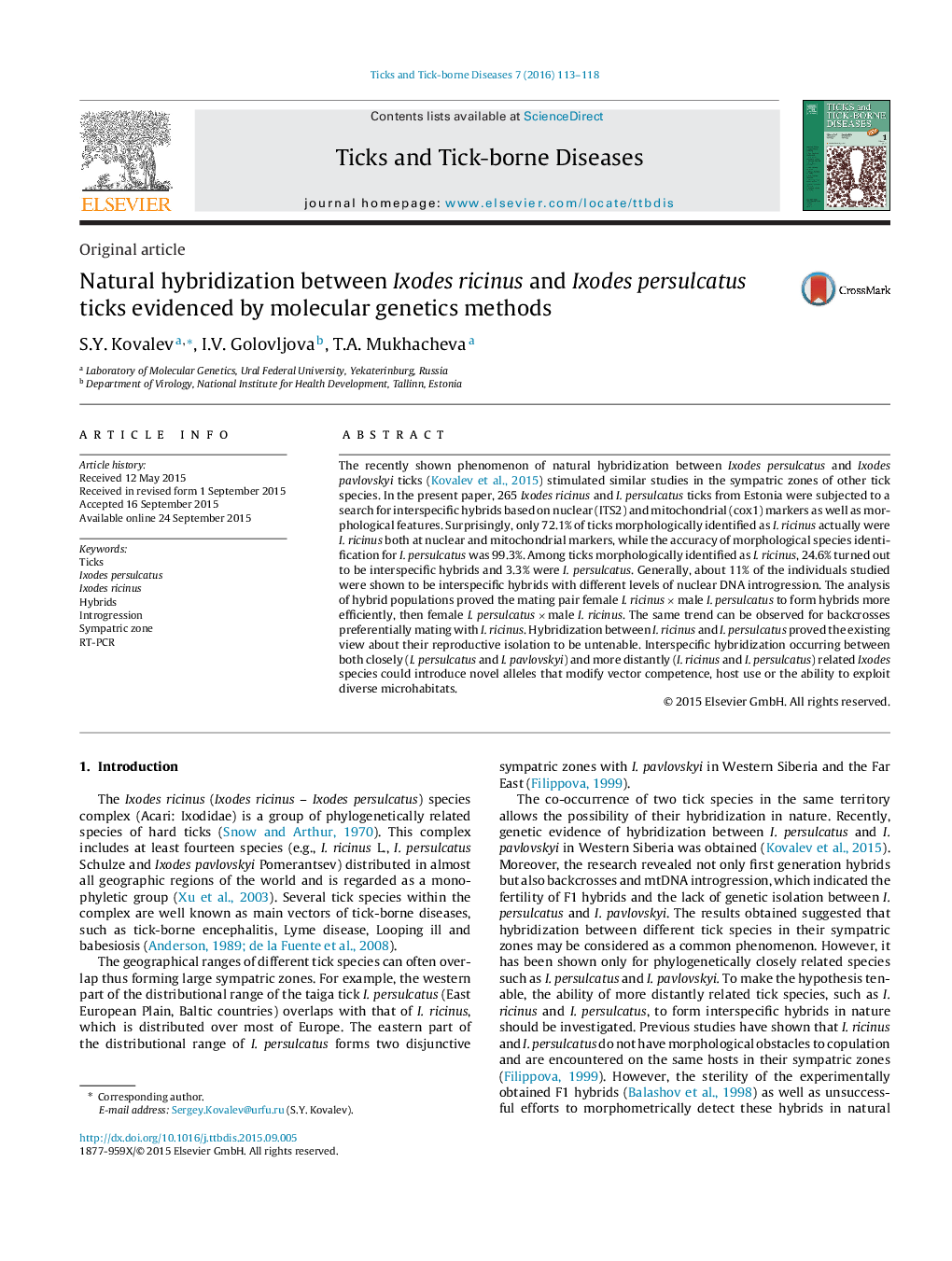| Article ID | Journal | Published Year | Pages | File Type |
|---|---|---|---|---|
| 5807019 | Ticks and Tick-borne Diseases | 2016 | 6 Pages |
The recently shown phenomenon of natural hybridization between Ixodes persulcatus and Ixodes pavlovskyi ticks (Kovalev et al., 2015) stimulated similar studies in the sympatric zones of other tick species. In the present paper, 265 Ixodes ricinus and I. persulcatus ticks from Estonia were subjected to a search for interspecific hybrids based on nuclear (ITS2) and mitochondrial (cox1) markers as well as morphological features. Surprisingly, only 72.1% of ticks morphologically identified as I. ricinus actually were I. ricinus both at nuclear and mitochondrial markers, while the accuracy of morphological species identification for I. persulcatus was 99.3%. Among ticks morphologically identified as I. ricinus, 24.6% turned out to be interspecific hybrids and 3.3% were I. persulcatus. Generally, about 11% of the individuals studied were shown to be interspecific hybrids with different levels of nuclear DNA introgression. The analysis of hybrid populations proved the mating pair female I. ricinus Ã male I. persulcatus to form hybrids more efficiently, then female I. persulcatus Ã male I. ricinus. The same trend can be observed for backcrosses preferentially mating with I. ricinus. Hybridization between I. ricinus and I. persulcatus proved the existing view about their reproductive isolation to be untenable. Interspecific hybridization occurring between both closely (I. persulcatus and I. pavlovskyi) and more distantly (I. ricinus and I. persulcatus) related Ixodes species could introduce novel alleles that modify vector competence, host use or the ability to exploit diverse microhabitats.
